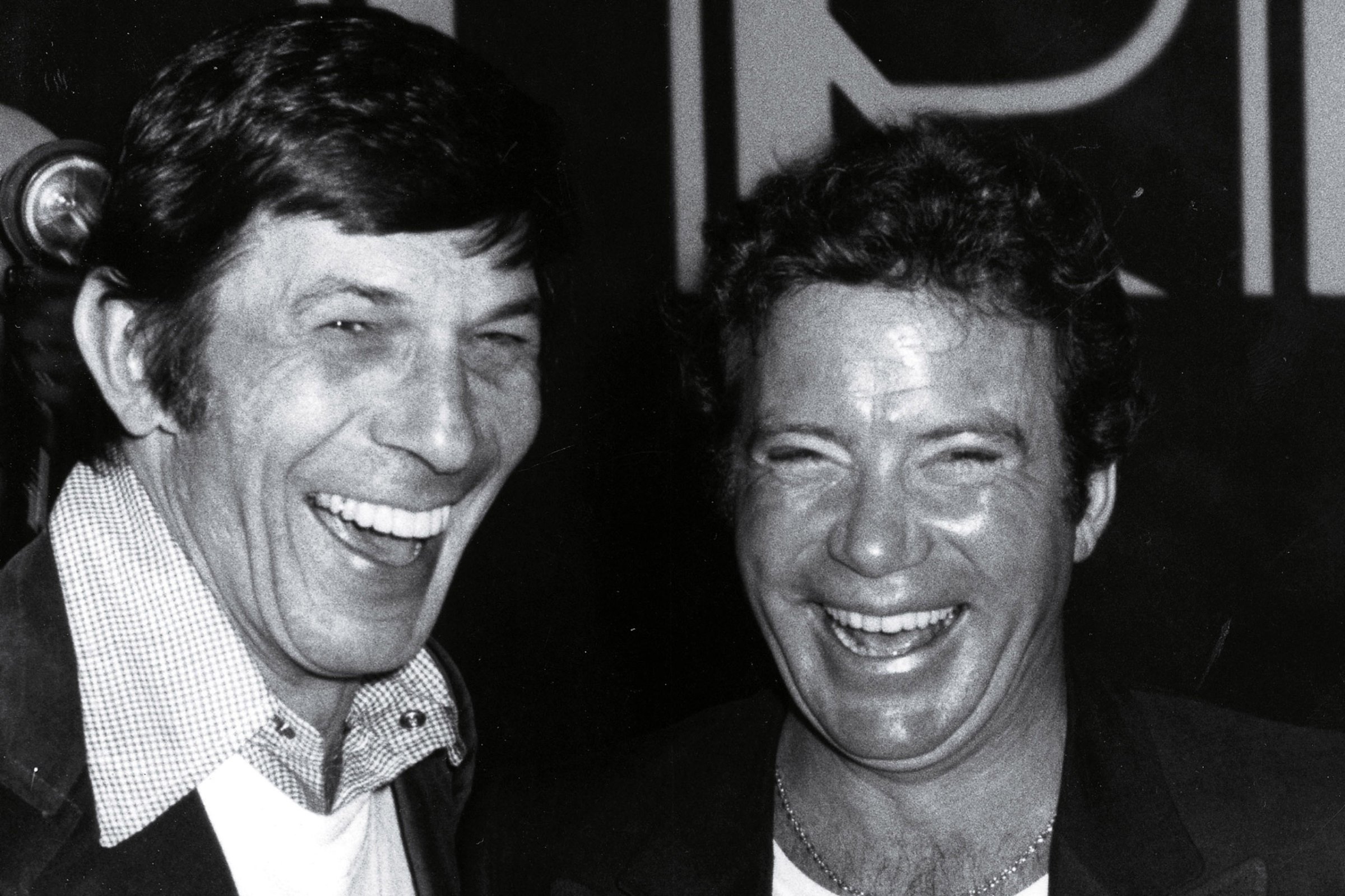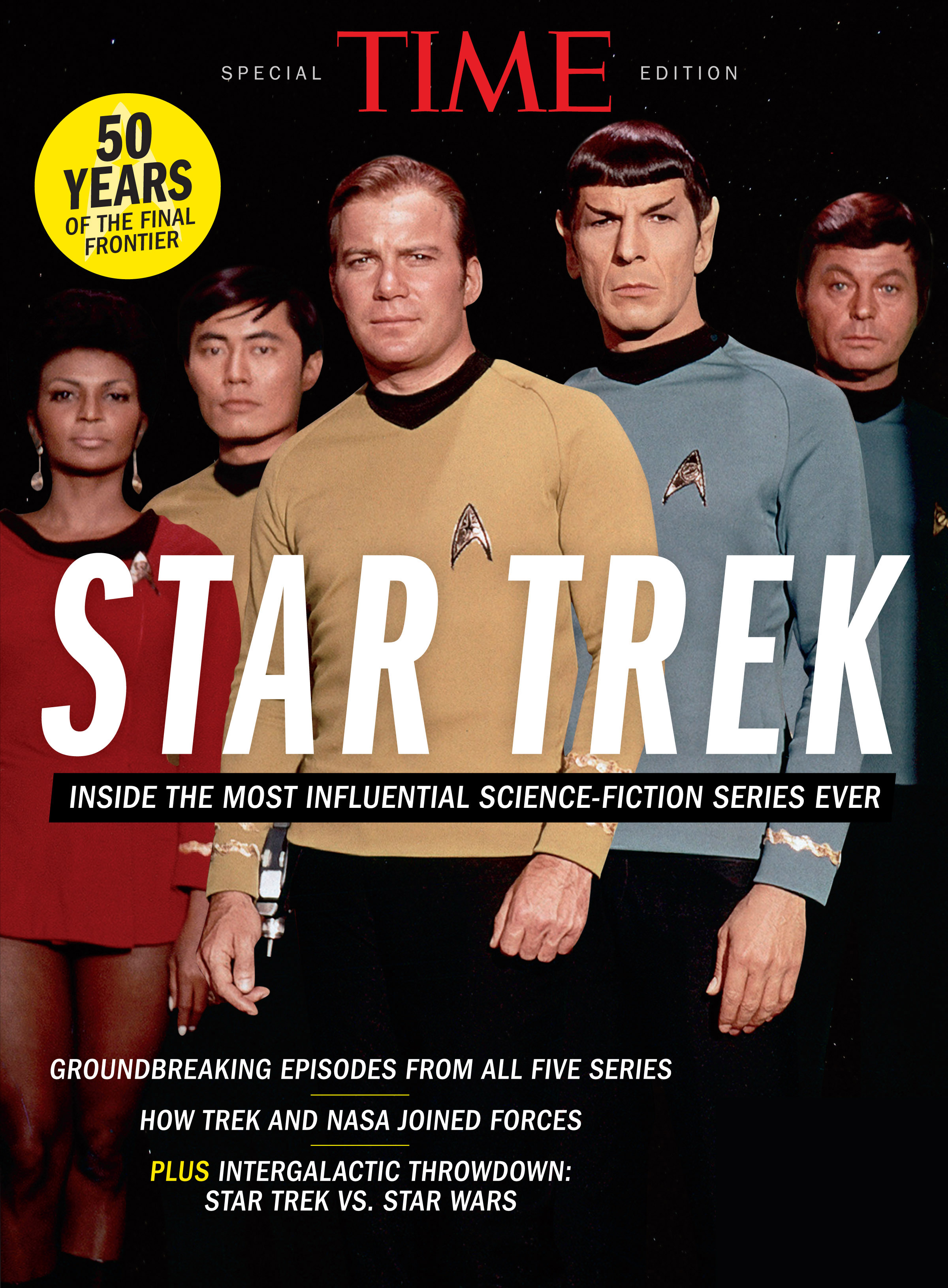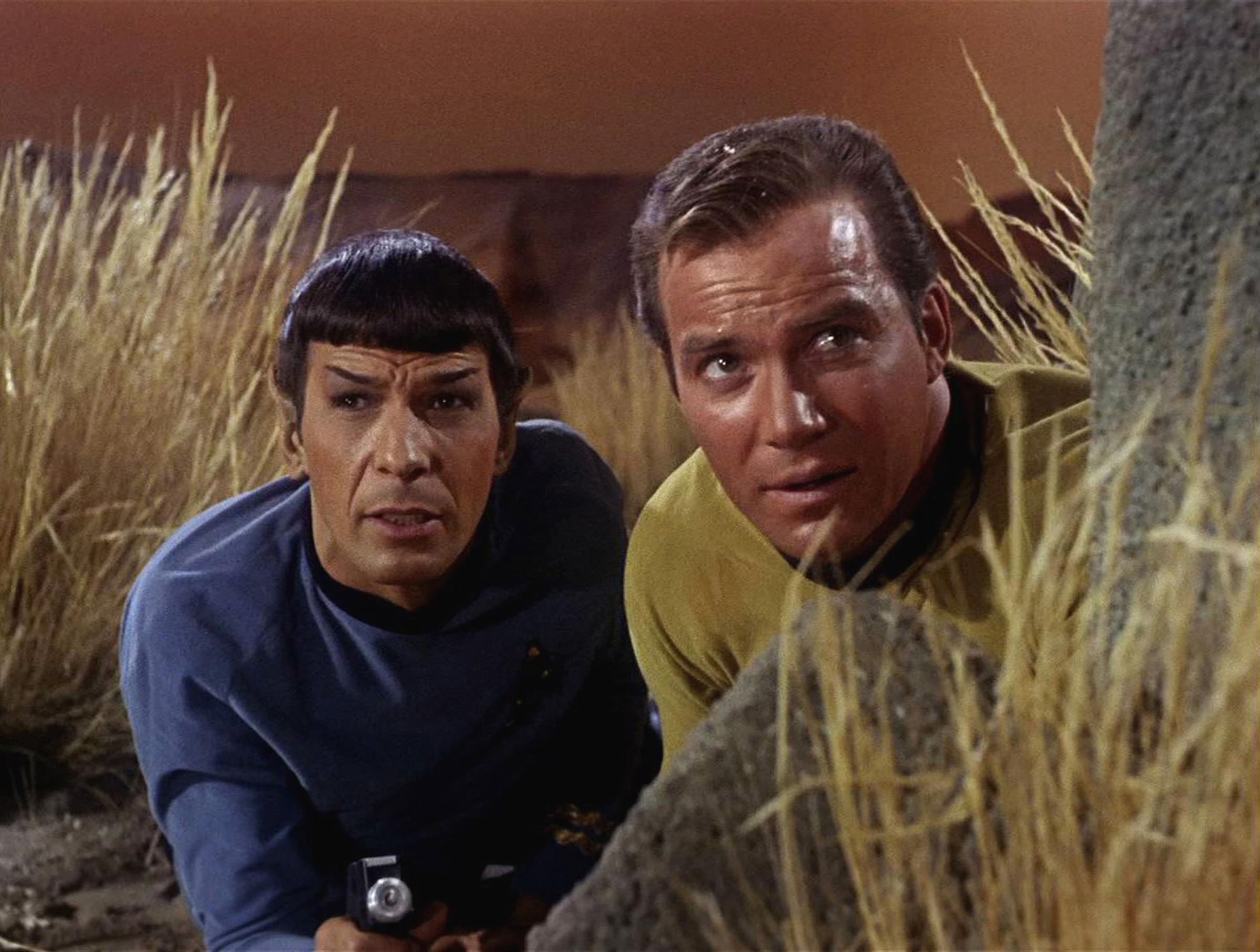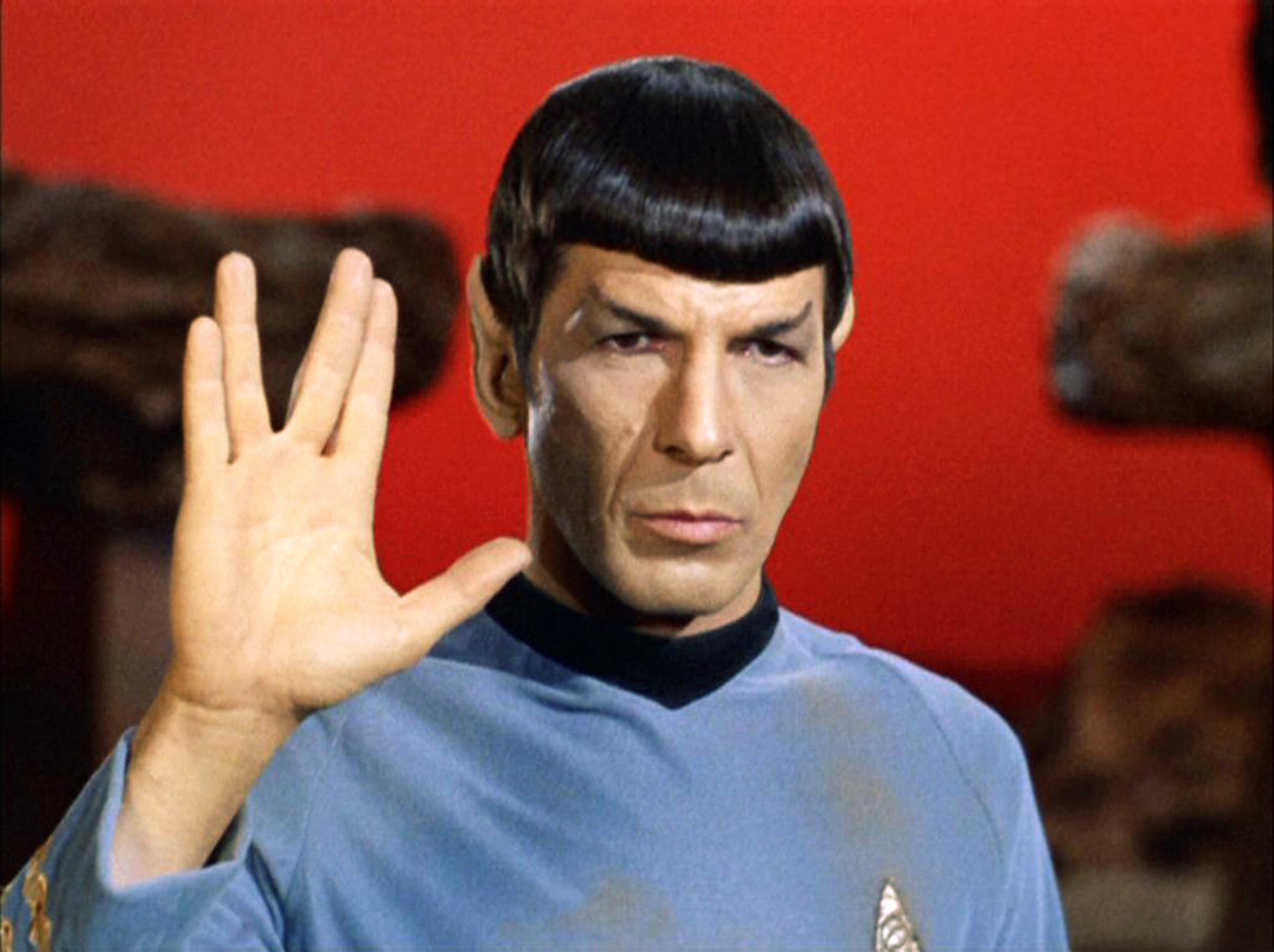
Excerpted from TIME’s Star Trek: Inside the Most Influential Science-Fiction Series Ever. Available at retailers and at Amazon.com.

Leonard Nimoy and I certainly didn’t start our journey as close friends. Rather, like the other members of our cast, we were colleagues, feeling each other out, learning our professional strengths and weaknesses and trying to bring our A game to the show. The friendships that developed initially were in the scripts: the relationship between Kirk and Spock held the show together. The two of us were onscreen in almost every scene. Leonard described the relationship between these two characters as a “great sense of brotherhood. Spock was tremendously loyal and had a great appreciation for the talent and the leadership abilities of Kirk. He was totally devoted to seeing to it that whatever Kirk needed to be done got done.”
Conversely, Kirk relied on Spock unfailingly for his advice, knowing it would never be encumbered by any thoughts of personal gain or tempered by emotional constraints. But he also depended on him to share the burdens of command. With the exception of Dee Kelley’s McCoy, Kirk had to maintain the distance of command from the rest of the crew. That can be a lonely place if there is no outlet, and Spock provided that outlet for Kirk.
The first week we were on the air, there was one bag of mail. People were writing that they loved the show and asked for autographed pictures. That was encouraging. The second week we got three bags of mail. That was interesting. And then the deluge started, and in fact, it still hasn’t ended. We had not the slightest idea what we were creating; we were always fighting to stay on the air one more season, one more week.

What was surprising to me was that rather than Capt. James T. Kirk, the character who received the most attention, and the most fan mail, was Mr. Spock. This was long before Leonard and I became friends, and honestly, I hadn’t expected it, and I was not especially thrilled about it. I was being paid the largest salary, I was out front for the publicity, I had the most lines, my character’s fate carried the story line, my character got the girl and saved the ship. The natural flow of events should have been that Kirk would receive the most attention, not some alien with strange-looking ears.
But the spectacular performance Leonard gave occupied all that attention in the beginning. Mr. Spock fan clubs were formed. Newspapers and magazines ran features on this extraordinary new character. Gene Roddenberry, the show’s creator, got a memo from the network suggesting that Spock be featured in every story. My future was on the line, and that line seemed to be getting shaky. And so, for a few weeks, I was quite jealous. It bothered me so much that I went to Gene Roddenberry’s office to discuss it with him. Gene was the voice of good reason in this case. “Don’t be afraid of having other popular and talented people around you,” he said. “They can only enhance your performance. The more you work with these people, the better the show is going to be.” In other words, the more popular Spock became, the better it was for everyone, including me, and I settled down to that lovely fact.
Spock evolved as Leonard explored all the possibilities of the character. It was a considerably more complex task than usual because there were no recognizable hallmarks. This was a brand-new character in American culture; he was carving out the path. There was no traditional right or wrong; the audience would tell him what was true. So Leonard took great care to protect Spock. He explained to me once, “No one else is going to provide that consistency and continuity. If the writers gave me the line ‘Let’s make hay under the Vulcan moon,’ it was up to me to remind them that three episodes earlier Spock had mentioned that Vulcan had no moons.”
Most of the hallmarks that became associated with Spock, in particular the Vulcan neck pinch and the Vulcan salute, were entirely Leonard’s creation. In one of our first episodes, Kirk’s personality was split into good and evil, and evil Kirk was about to kill good Kirk. In the script, Spock was supposed to sneak up behind evil Kirk and knock him out by hitting him over the head with the butt of his phaser. Leonard wasn’t comfortable with that; brawling, banging someone in the head somehow seemed below Spock’s evolved personality. It was too 20th-century. So he suggested to the director that Spock had a special capability that allowed him to put enemies out of action with little physical exertion. The director was open to the concept.

Leonard and I sat down, and he told me what he had in mind: he would pinch my trapezius muscle, and I would collapse in a heap. I have no idea where that concept came from, but I was a professional actor; I knew how to fall down. Of course, it fit Spock perfectly: an advanced civilization would know where the vital nerves are located and have the physical strength to take advantage of that knowledge to incapacitate their enemy. We did the scene: Spock came up behind evil Kirk and pinched his trapezius, I dropped to the floor, and the Vulcan nerve pinch was born. For those people counting at home, fans of the show saw the Vulcan nerve pinch being used 34 different times. I wonder how many kids since then have had to suffer through the real pain of a Vulcan neck pinch.
The Vulcan salute has become recognized literally throughout the world. In this salute, the right hand is held up with the pinkie and ring finger touching but separated from the middle finger and forefinger, which also are touching, in a modified V-for-victory salute. It was created for the first episode of our second season, by which time Leonard had a strong understanding of Spock. In this episode, “Amok Time,” Spock has to return to Vulcan to fulfill a marriage betrothal that was arranged when he was a child. If he doesn’t return, he will die. This episode was written by the great science-fiction writer Theodore Sturgeon. This is the first time we have seen Spock on Vulcan, among the people of his race. In the script, he is greeted by the woman who is to conduct the marriage ceremony. Leonard suggested to the director that there needed to be some type of Vulcan greeting that would be appropriate. It would be the Vulcan version of a handshake, a kiss, a nod or bow, or a military salute. When the director agreed, Leonard had to create it. It was not an especially easy thing to envision. It needed to be unlike any traditional greeting, but it couldn’t be at all comical. As he often did, Leonard drew on his own life to find it.

There is a gesture he had first seen when he was 8 years old, when he went with his grandfather, father and brother to an Orthodox synagogue, and he had never forgotten it. In Jewish Orthodox tradition, during the benediction, the Shechinah, which very roughly means the feminine counterpart to God, enters the sanctuary to bless the congregation. The Shechinah is so powerful that simply looking at it could cause serious or even fatal injury. So worshipers use this gesture, in which their fingers form the shape of the Hebrew letter shin to hide their eyes. The gesture always intrigued him. “I didn’t know what it meant for a long time,” he said. “But it seemed magical to me, and I learned how to do it.” Not only did he use it as the basis for the traditional Vulcan greeting in the episode, many years later he published a controversial book of naked glamorous women wearing religious symbols, titled Shekhina. The gesture immediately caught on. Fans of the show started greeting him with it on the street—without realizing they were blessing each other.
Several of Spock’s phrases also have become part of the general culture, but none of them are as widely known as the four words said when giving the Vulcan salute that have come to have such deep meaning: “Live long and prosper.” They were written by Theodore Sturgeon for the same episode and are now known by the abbreviation LLAP—which was the way Leonard ended all his own tweets.
Spock eventually became a lasting archetype for an unemotional person. Even decades later, when New York Times columnist Maureen Dowd wanted to make the point that President Obama was dispassionate and distant, she referred to him as Spock. Spock’s lack of emotion became a central theme of the show. In fact, a lot of the humor in the show came from the constant sparring between the very human Bones McCoy and Spock. In one episode, for example, Spock comments, “He reminds me of someone I knew in my youth.” To which the surprised Bones responds, “Why, Spock, I didn’t know you had one.”

It is difficult for people who aren’t actors to appreciate the talent it took to create a character that has become a part of American cultural history, the enigmatic Jay Gatsby of the 23rd century, destined to be played and interpreted by other actors. In less capable hands, it could have been a very one-dimensional role, but Leonard was able to create a dynamic inner life for Spock.
It resonated with audiences. Kids began wearing Spock ears, and Leonard received piles and piles of fan mail, far more than any of the other cast members. When he was out in public, people would greet him with a raised hand or wish him, “Live long and prosper.” On a different level, I experienced the same thing. People began addressing me as “Captain” or “Kirk.” That was a new experience for me. I’d had professional success, I’d played a role in some major movies, people recognized me, but I had never before been called by my character’s name. It was odd, and in some ways, it made me uncomfortable. I’m not quite sure why, but it did. I wondered, What is that all about? It’s crazy. So often I didn’t acknowledge it, or I disparaged it.
Perhaps the strangest thing was that eventually Leonard became somewhat ambivalent about his relationship with Spock. Spock made Leonard’s career. In each of the three years the show was on the air, Leonard was nominated for an Emmy for best supporting actor. TV Guide named Spock one of the 50 greatest characters in TV history. Leonard became well known and in demand because of the original series. But the new fear, replacing “I will never work again,” was that he was so strongly identified as Spock that he could never escape him.
For someone who proudly described himself as a character actor, being so strongly typecast he could not play other roles was a terrifying possibility. His first autobiography, published in 1975, was titled I Am Not Spock. The title, he explained, came from a meeting in an airport in which a woman introduced him to her daughter as Spock—although the child was never convinced. It also came from the publisher’s desire to profit from the popularity of Spock as well as create a little controversy. It was not, Leonard always insisted, meant to be a statement about his feelings about Spock, and he said if he ever had the opportunity to portray any fictional character, without hesitation he would choose Spock. And several years later, when he did write a second autobiography, it was titled I Am Spock. He had come full circle.
Adapted from Leonard, by Willam Shatner with David Fisher. Copyright 2016 by the authors and reprinted by permission of Thomas Dunne Books, an imprint of St. Martin’s Press, LLC.
More Must-Reads from TIME
- Donald Trump Is TIME's 2024 Person of the Year
- Why We Chose Trump as Person of the Year
- Is Intermittent Fasting Good or Bad for You?
- The 100 Must-Read Books of 2024
- The 20 Best Christmas TV Episodes
- Column: If Optimism Feels Ridiculous Now, Try Hope
- The Future of Climate Action Is Trade Policy
- Merle Bombardieri Is Helping People Make the Baby Decision
Contact us at letters@time.com